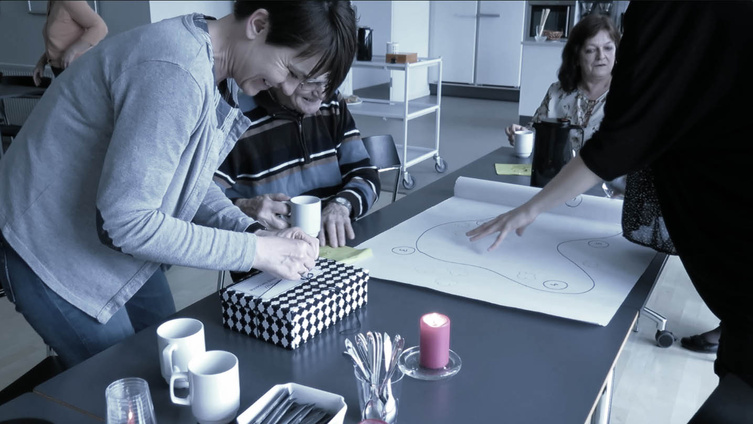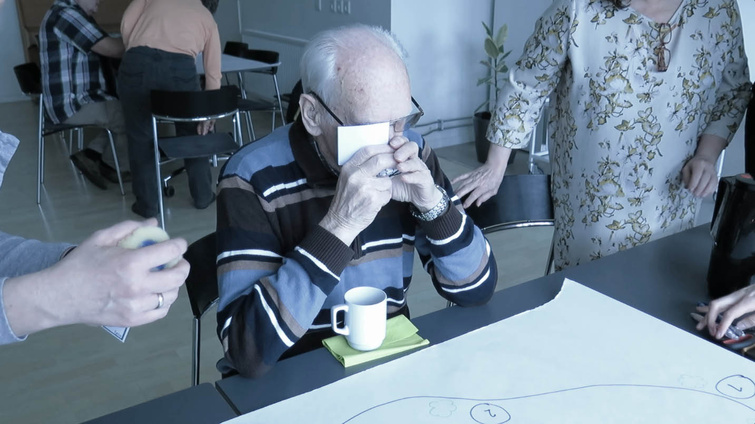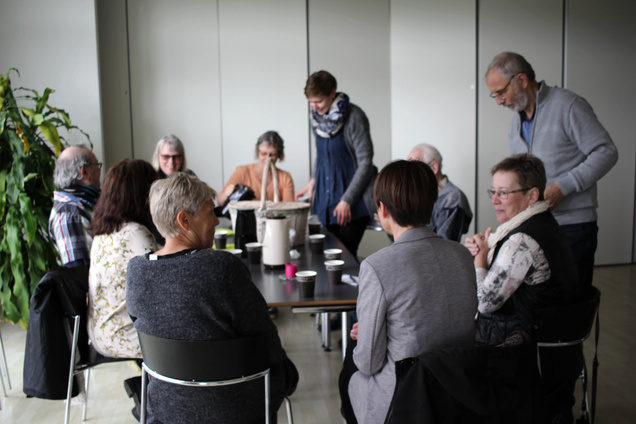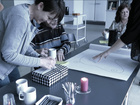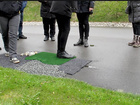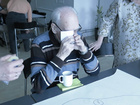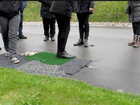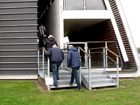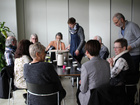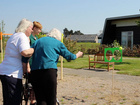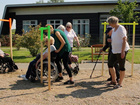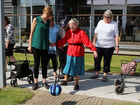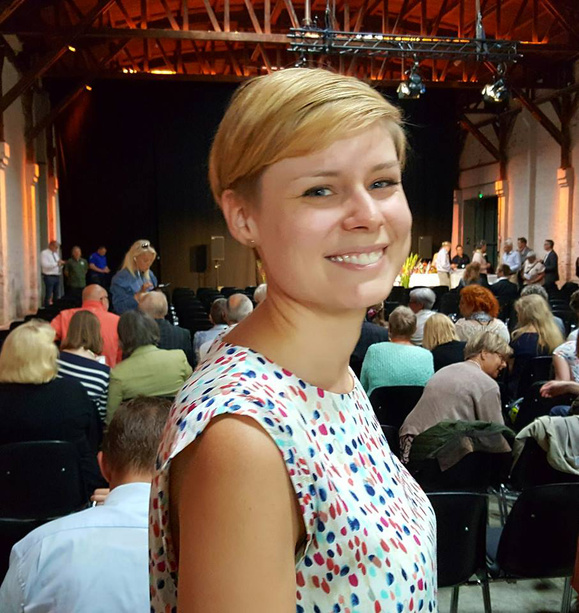Dementia is an illness that affects many Danes – more than 80,000 people are estimated to suffer from the disease, which eats up the memory and familiar points of reference in one’s existence. It cannot be cured, but with exercise and movement, you can mitigate some of its symptoms. Meet the designer, Emmy Linde, who in her degree project created walking routes aimed at giving people suffering from dementia a chance for safe, physical exercise.
Your degree project is entitled ‘ForgetMeNot – Dementia Friendly Walking Routes’ – what is it all about?
My project is about dementia-friendly walking routes. Dementia is a disease that cannot be cured, but research has shown that physical activity can reduce the disease’s symptoms: for example, depression, anxiety and restlessness. If we can reduce the symptoms, we can give the dementia-sufferer a higher quality of life. So we need interesting, safe activities targeted people with dementia.
In collaboration with Næstved Municipality, I explored what a dementia-friendly walking route should include. How do you create a motivating walking route that inspires people to use it? And how can you make a walking route safe, so users suffering from dementia can find their way back home?
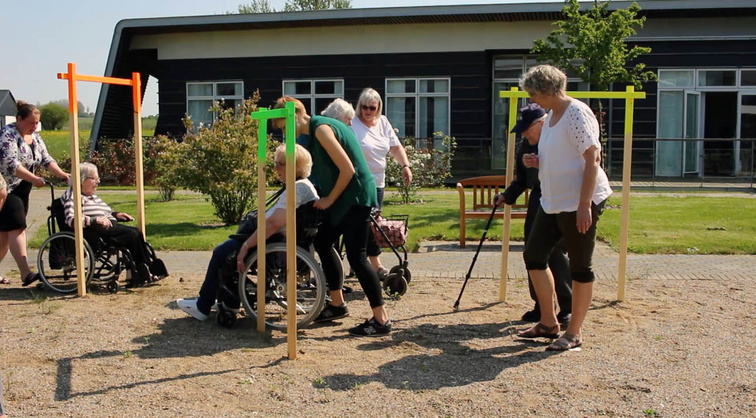
What was your motivation for this project in particular?
My motivation is always to make a difference for people who are unable to influence their own situation.
Dementia is an illness that affects very many people in Denmark, but a dementia diagnosis is still a taboo subject. Getting the opportunity to do something to draw attention to this disease, while at the same time exploring ways of increasing the inclusion of dementia sufferers in society, was a great source of motivation for me.
I have a Bachelor’s degree in Spatial Design, Perception and Detail. That was naturally a big influence on my choice of project. The programme focuses very much on physical surroundings and how they affect us.
Did you work with other people during the process, and how did that affect your work process?
In my project I collaborated with Næstved Municipality. Throughout the process I worked together with ‘Symfonien’, a nursing home and activity centre in Næstved, where I involved staff (dementia specialists, occupational therapists, physiotherapists and nursing staff), relatives and people diagnosed with dementia in the process.
Together we explored different ideas and options for a dementia-friendly walking route: for example, in several workshops.
By involving users in the entire working process, I get direct response to the ideas I need to try out. The project never stands still and is in a constant state of development! It also means that the implementation process already starts at an early stage, in which the user can see both opportunities for change and his/her own role in the process.
Where do you imagine your degree project will make a difference?
I believe my final project can help reveal the importance and possibilities of involving users throughout the entire design process. As part of my project I compiled a ‘12 Tips - How To’ guide, which can be used for inspiration, if anyone feels like creating a dementia-friendly walking route somewhere else. The leaflet can help pave the way for, and inspire similar projects and make it easier for people to get started.
What sort of development potential do you think the project has?
The project was part of a preliminary investigation phase in Næstved Municipality, and I think it could be very exciting to be allowed to continue the project. It has a lot of potential for development and there is a lot more to work on.
Næstved Municipality want to implement walking routes in various locations in the municipality, the project was not site-specific. So it can certainly be implemented elsewhere.
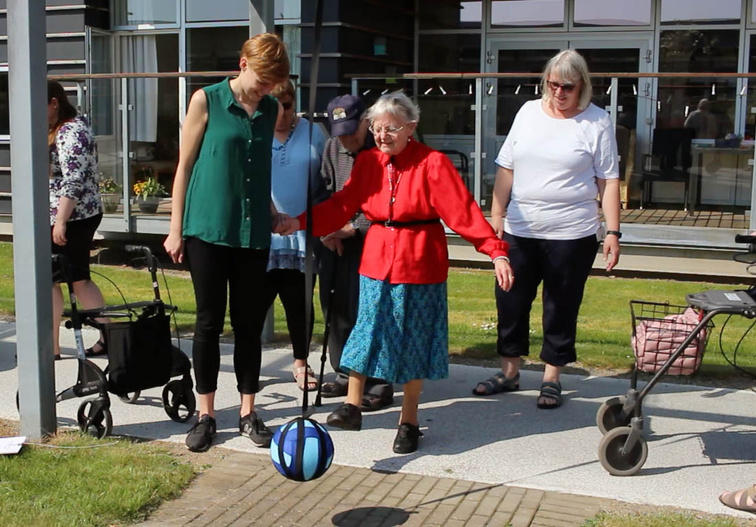
What are the most enjoyable and the most difficult aspects of designing the way you do?
What is most enjoyable and most difficult about working in the field of co-design is the fact that you are working with people. Working with other people is the most inspiring and the most unpredictable thing one can do! And of course it affects the process. Processes become extremely complex, but also lead to a more sustainable result. I love the combination of enjoyable and difficult.
If you were to identify a design, which you would have loved to design. what would it be, and why?
I’m a big fan of MASS Design Group. I would love to have been involved in the design of the Butaro Hospital in Rwanda and developed the working methods they use. MASS does not only work with architecture and user involvement in the design process; they also involve the local community in the construction of the new hospital: for example, by training the local people as carpenters, bricklayers and project managers. This provides them with employment opportunities during and after the construction process.
What do you think is your greatest strength as a KADK design graduate?
My greatest strength as graduate designer from KADK is the combination of my Bachelor’s degree in Spatial Design and my Master’s in CoDesign. The combination means that I can use co-design methods to create practical, beautiful environments together with users and other groups of professionals. My designer’s eye, when combined with the user’s knowledge and experience provides a more durable solution.
It is also a huge strength, even as a student, to have managed complex processes with lots of stakeholders.


